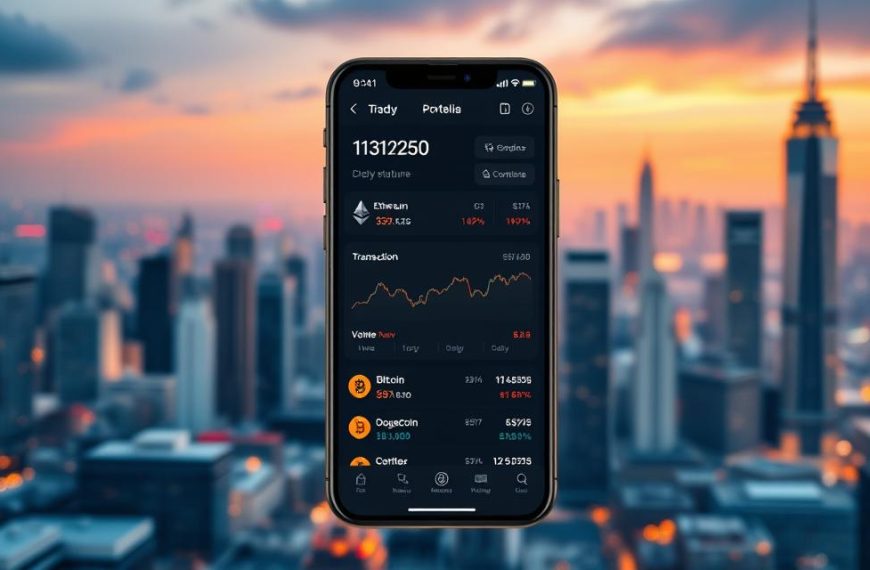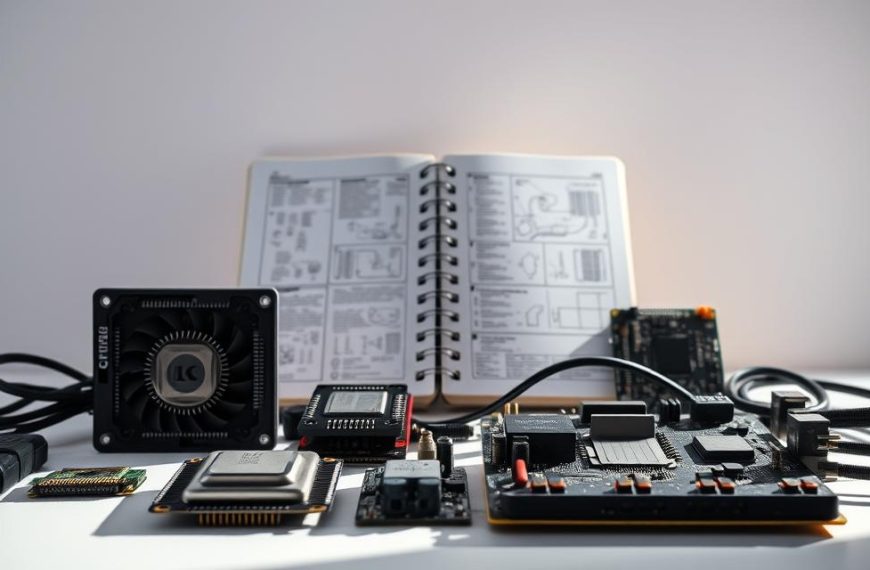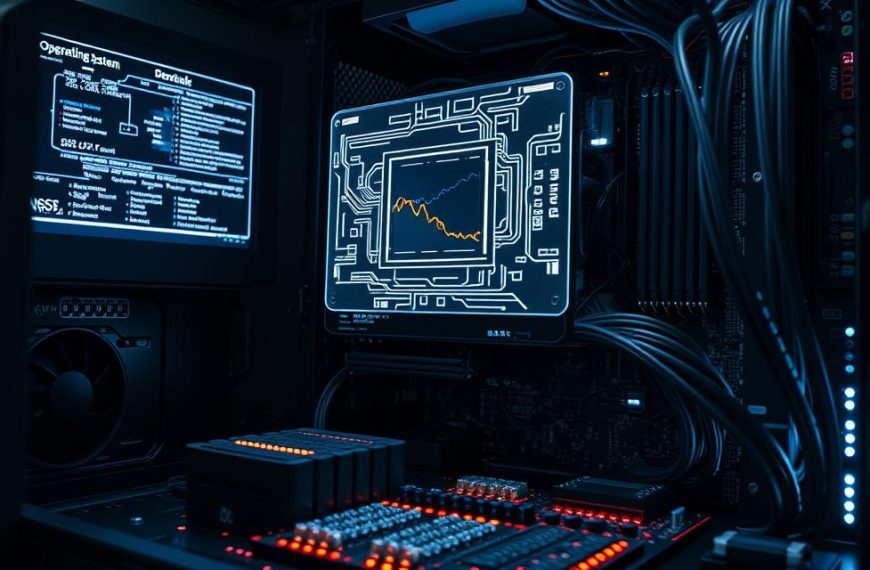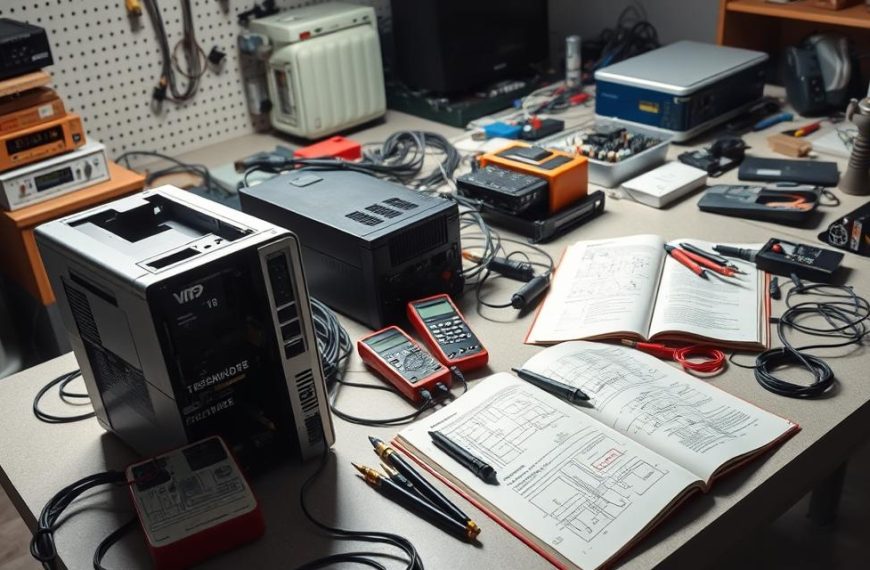Once reserved for Wall Street firms, high-frequency trading now powers over 50% of crypto exchange volume. Advances in APIs and low-cost platforms let individual traders compete with institutions, capturing micro-movements in the 24/7 cryptocurrency market.
The strategy thrives on speed. By leveraging algorithmic trading tools, traders execute orders in milliseconds, turning tiny price gaps into consistent profits. Real-time data feeds and optimized code are essential to overcome latency challenges.
Automation removes emotional decisions, a key advantage in volatile markets. However, infrastructure costs and fee structures demand careful planning. With the right setup, even small budgets can tap into this fast-paced trading approach.
Understanding High-Frequency Trading in Cryptocurrency
The crypto market’s non-stop nature gives traders an edge in rapid execution. Unlike stocks or forex, digital assets trade 24/7, allowing strategies to capitalize on price movements at any hour. This constant activity fuels volatility, with annual swings exceeding 300% in major tokens like Bitcoin.
Liquidity varies across platforms like Binance and Coinbase Pro. During the 2021 bull run, Binance handled billions daily, proving crypto exchanges can match traditional markets. Yet, fragmented order books create price gaps—ideal for arbitrage.
What Makes Crypto Ideal for HFT?
Extreme volatility turns tiny price shifts into profits. Traditional markets lack this intensity, with tighter spreads and slower momentum. Crypto’s decentralized structure also means no single entity controls pricing, unlike NYSE or Nasdaq.
Key Differences Between Crypto and Traditional Market HFT
Co-location—placing servers near exchange data centers—is harder in crypto. With no physical hubs, latency depends on API speeds. Regulations add complexity; the U.S. and EU treat crypto differently, forcing cross-border adjustments.
One firm exploited discrepancies across four exchanges, netting 0.3% daily gains. Such opportunities vanish quickly, demanding real-time data and flawless execution.
A High-Frequency Algorithmic Trading Strategy for Cryptocurrency
Speed and precision define success in today’s digital asset markets. Three proven approaches leverage algorithms to capitalize on micro-movements: ping-pong trading, statistical arbitrage, and cross-market execution. Each targets specific inefficiencies in crypto’s 24/7 markets.
Ping-Pong Trading: Profiting from Micro-Movements
This approach exploits tiny price fluctuations within a single exchange. Automated systems place buy/sell orders at predefined thresholds—typically 0.1-0.3% apart. The table below shows optimal ranges for major pairs:
| Pair | Buy Threshold | Sell Threshold | Avg. Daily Trades |
|---|---|---|---|
| BTC/USDT | 29,950 | 30,050 | 120-180 |
| ETH/USDC | 1,795 | 1,800 | 90-130 |
CoinAPI’s Smart Order Routing executes these trades in under 50ms. The key is volume—small gains compound across hundreds of daily transactions.
Statistical Arbitrage: Exploiting Price Correlations
Related assets like BTC and ETH often move together. When their price ratio deviates from historical norms (measured by z-scores), algorithms trigger paired trades. A 2023 study found:
- Z-scores above 2.0 signal 87% reversion probability
- Optimal holding period: 4-7 minutes
Cross-Market Arbitrage: Capitalizing on Exchange Discrepancies
Price gaps between exchanges like Binance and Kraken create instant profit opportunities. One trader netted $100 on a $10,000 BTC spread—a 1% gain in seconds. Successful execution requires:
- Real-time data from 350+ connected exchanges
- Fee-aware calculations (spread must cover 0.2% fees)
- Simultaneous order placement
These strategies work best when combined. Ping-pong captures small moves, while arbitrage targets larger imbalances. The common thread? Removing human delay from the equation.
Essential Infrastructure for High-Frequency Crypto Trading
Millisecond advantages determine profitability in fast-moving crypto trades. Your system must process orders faster than competitors, requiring specialized tools and setups. Three pillars define success: real-time data, optimized APIs, and strategic server placement.
Low-Latency APIs and Data Feeds
APIs bridge your strategy to exchanges. WebSocket protocols outperform REST, delivering updates in 10ms versus 200ms. CoinAPI’s solution powers 90% of institutional traders for this reason. Compare protocols below:
| Protocol | Latency | Use Case |
|---|---|---|
| WebSocket | 10-50ms | Real-time order books |
| REST | 200-500ms | Historical data pulls |
| FIX | 15-30ms | Institutional order routing |
Binance’s 400Gb/s matching engine demands equally fast connections. Pair APIs with historical libraries to backtest strategies against years of market shifts.
The Role of Co-Location Servers
Physical proximity to exchange servers slashes execution times. Jump Trading spends $2M annually to place hardware near Nasdaq. Crypto lacks centralized hubs, but colocation costs $5k–$15k/month per exchange.
- AWS vs. Bare-Metal: Cloud servers add 2–5ms latency. Dedicated machines shave microseconds.
- Network Routes: Fiber-optic lines reduce hops between your system and trading venues.
Every microsecond counts. In 2021, a firm gained $1.2M yearly by trimming their low-latency setup by 0.3ms.
Risk Management in High-Frequency Crypto Trading
Extreme price swings demand robust safeguards for capital protection. The 2018 crash erased 60% of some portfolios, proving even automated systems face risk. Effective strategies balance aggression with defenses against *volatility*.
Circuit breakers halt trading after a 2% drawdown, preventing emotional overrides. For example:
| Asset | Daily Volatility | Recommended Stop |
|---|---|---|
| BTC | 3.5% | 1.8% |
| ETH | 4.2% | 2.0% |
Volume-weighted average price (VWAP) strategies optimize order sizes. Larger trades in illiquid markets worsen slippage, so algorithms split orders based on real-time liquidity.
Flash crashes require time-weighted orders. Instead of flooding the market, bots drip-feed trades to avoid triggering panic sells. The CFTC fines spoofing (fake orders) up to $1M—another reason to automate ethically.
- Insurance: Some platforms cover exchange hacks, but policies exclude *volatility* losses.
- Compliance: Follow MiCA (EU) and SEC guidelines. Track jurisdiction-specific rules.
Real-time data minimizes execution delays. Pair APIs with stop-loss caps to exit positions before market conditions turn toxic. Profits mean little without capital preservation.
Building Your First HFT Algorithm: A Practical Approach
Building a profitable system requires precision in both code and execution. Start by selecting tools that balance speed with flexibility. This section breaks down the two critical phases: development and validation.
Choosing the Right Programming Language
Latency determines success in rapid-fire markets. Benchmarks reveal stark differences in execution speeds:
| Language | Latency | Best For |
|---|---|---|
| C++ | 0.05ms | Core matching engines |
| Rust | 0.07ms | Memory-safe systems |
| Python | 15ms | Prototyping with QuantLib |
Python’s QuantLib simplifies testing complex strategies. However, production systems often migrate to C++ for microsecond gains. One firm reduced ping times from 300ms to 5ms by rewriting their algorithm in Rust.
Backtesting Your Strategy with Historical Data
CoinAPI’s datasets spanning 2010+ let you simulate performance across market cycles. Avoid these common pitfalls:
- Overfitting: A 2021 bull-market-only test yielded 92% accuracy—then failed in bear conditions.
- Slippage gaps: Always include fee structures in simulations.
Monte Carlo simulations optimize ping-pong thresholds. For example, testing 2017-2023 BTC data revealed optimal 0.25% spreads during high volatility.
Continuous integration pipelines keep algorithms updated. One trader automated daily backtests using GitHub Actions, catching regressions before live deployment.
Regulatory Considerations for Crypto HFT
Navigating legal frameworks is critical for sustainable crypto trading operations. The EU’s MiCA regulations, effective 2024, mandate transparency for automated systems. Non-compliance risks fines up to 5% of global revenue.
The FATF Travel Rule complicates cross-border trades. Firms must share sender/receiver data for transactions over $1,000. This impacts liquidity by slowing settlement times.
Tax reporting requires precise methodologies. The IRS treats crypto as property, forcing a choice:
- FIFO: First-in-first-out simplifies audits but may increase tax burdens.
- LIFO: Last-in-first-out optimizes gains but triggers scrutiny for 10k+ daily trades.
Licensing varies by state. New York’s BitLicense demands $5,000 fees and 500+ hours of paperwork. Wyoming’s SPDI framework offers faster approval but limits operational scope.
KYC/AML protocols are non-negotiable. A 2023 CFTC case fined a trader $1M for spoofing—fake orders that manipulate market prices. Robust systems must flag such activity automatically.
The SEC’s lawsuit against Coinbase highlights enforcement trends. Allegations of unregistered securities trading underscore the risks of ignoring evolving rules. Proactive compliance separates survivors from casualties.
Top High-Frequency Trading Firms in Cryptocurrency
Market makers dominate crypto’s fastest-moving trades, leveraging cutting-edge tech. These firms provide over 60% of daily liquidity, earning fractions of a cent per transaction at massive scale.
Jump Trading leads with 38% market share in derivatives. Their 24/7 crypto desk supports 100+ exchanges, executing trades in under 500 microseconds. “Speed isn’t everything—it’s the only thing,” states their Chicago-based team.
Jane Street expanded from ETF dominance into altcoins last year. Their proprietary algorithms now process $750M daily in SOL and ADA pairs. The firm reportedly earns 0.0003% per trade through relentless optimization.
Three other powerhouses shape the landscape:
- Hudson River Trading – Quant models analyze 15TB of daily crypto data
- DRW’s Cumberland – $2B daily volume with price-improvement tech
- Virtu Financial – 0.0001% profit per trade across 50+ venues
These players thrive on volatility. When Bitcoin swings 5% hourly, their systems capture 0.8% spreads repeatedly. The 2023 bear market proved their resilience—Wintermute still traded $300B despite prices crashing.
“Liquidity begets liquidity. Our job is to tighten spreads until retail traders benefit too.”
New entrants like Citadel Securities now test BTC spot markets. Their infrastructure spends $40M annually on low-latency networks, signaling crypto’s maturation as an asset class.
Conclusion
Small budgets can still compete in rapid cryptocurrency markets with the right setup. Focus on low-latency APIs, real-time data, and robust risk tools to maximize profit potential.
Start with demo accounts to test strategies before scaling live. Over-optimization in volatile conditions often backfires—simplicity wins.
AI-enhanced algorithms will dominate by 2025, but core principles remain: speed, precision, and discipline. Most traders succeed by turning tiny gaps into consistent profit.
Ready to begin? Try CoinAPI’s free trial to access the tools pros use.


















